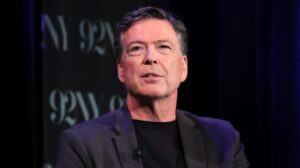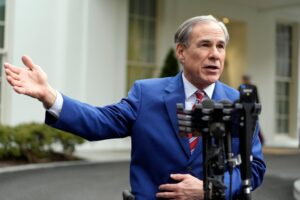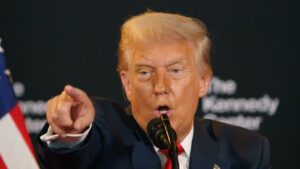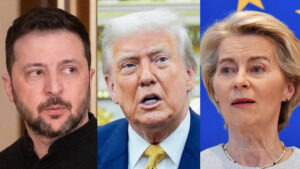Politics
The Puerto Rican vote in Pennsylvania could have a powerful impact this election
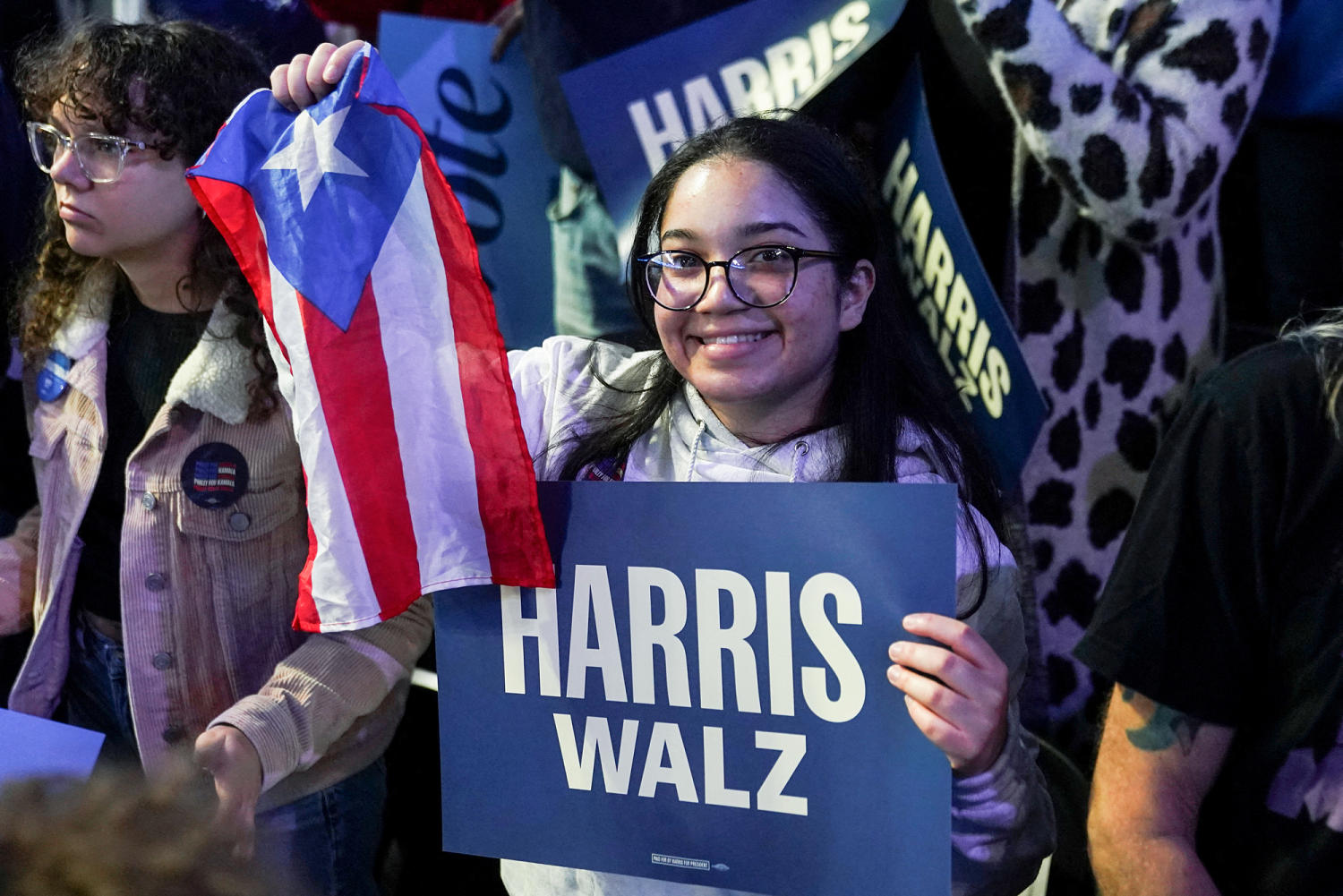
The Thursday before Election Day, Vice President Kamala Harris’ presidential campaign dropped an ad appealing directly to Puerto Rican voters. Unlike a previous video released a day after Trump-supporting comedian Tony Hinchcliffe called Puerto Rico a “floating island of garbage,” this new video was a master class in how to pull at the heartstrings of Boricua identity and pride.
If there is one presidential campaign truth coming out of Sunday’s garbage joke, it’s that Puerto Ricans are fired up to vote in 2024.
The video, called “Somos más” (we are more), featured a Spanish-speaking narrator, with his very noticeable Puerto Rican accent, listing the many reasons why Puerto Rico and its people should never be disrespected. It was a rare moment when Democrats got their message right for Puerto Rican voters and their Latino allies.
Of course, the ad was not for Puerto Ricans living on the island. Being a colony means that Puerto Rico’s 3 million residents can’t vote for president even though they are American citizens. It’s complicated as to why, and with just days until Election Day, the Harris campaign was not about to have the uncomfortable yet necessary conversations about why Puerto Ricans continue to be ignored by both Republicans and Democrats. Colonialism has that effect.
No, this ad was all about the nearly 1 million Puerto Ricans who can vote in swing states, where they live. And if there is one presidential campaign truth coming out of Sunday’s garbage joke, it’s that Puerto Ricans are fired up to vote in 2024, and the Harris campaign is wise to make sure they do.
They could in fact be the next swing state power brokers, particularly in states like Pennsylvania, where more than 300,000 voters of Puerto Rican descent are eligible to vote. In 2020, Joe Biden won the state by around 81,000 votes. If the last week has significantly raised the Boricua desire to not vote for Trump and to vote for Harris, then the state will stay in the Democratic column.
According to The Center for Puerto Rican Studies at Hunter College, Florida residents of Puerto Rican descent represent 5.7% of the state. Ohio, North Carolina, and Wisconsin are at 1%. In Arizona, Puerto Ricans account for 0.9% of the state, with Nevada coming in at 0.8%. In these races where just thousands of votes will determine Electoral College winners, playing up the events of last week and raising awareness among Puerto Ricans have a real chance of making a difference for Harris.
Understandably, the Trump campaign is doing everything it can to diffuse that possibility. Biden’s response to the “garbage joke” could have given Trump a lifeline; at a Tuesday rally in Allentown, where the population is about 25% Puerto Rican, Trump insisted he “will deliver the best future for Puerto Ricans and for Hispanic Americans.” At the same event, Zoraida Buxó, a Republican Puerto Rican pro-statehood supporter and a “shadow senator” of the island’s current pro-statehood government, publicly supported Trump, saying, “We need this man back in the White House. We need this man to be our commander-in-chief. He will make us feel safe. And he will protect us.”
But Buxó’s Trump endorsement lacks the star power and influence of a number of prominent Puerto Rican celebrities who have publicly voiced their support for Harris, from Jennifer Lopez to Bad Bunny to Ricky Martin to Puerto Rican-Dominican reggaeton star Nicky Jam, who in September was all for Trump, but on Wednesday, took it all back.
“Never in my life did I think that just one month later a comedian would show up and criticize my country, and speak poorly of my country. And for that, I revoke any support for Donald Trump and I’m stepping aside from any kind of political situation. Puerto Rico is to be respected,” Jam posted on social media.
This sentiment is strongly echoed on the island itself, where people in Puerto Rico are fed up with their colonial status, as political anthropologist Yarimar Bonilla explains in her excellent New York Times opinion piece, in which she highlights how Puerto Rico’s younger generation “is determined to reclaim the island’s future.” Puerto Rico’s general election this year falls on the same day as the United States’s presidential election. History would be made if the island were to elect its first pro-independence governor, Juan Dalmau.
If Puerto Ricans in the diaspora mobilize and vote in record numbers, they will be issuing a declaration that they cannot be marginalized. Their message: Respect for Puerto Rico and its people is no longer optional.
As both Election Days approach, Puerto Rican voters in swing states can remain reactive to the predictable cycle of political neglect — or use this moment to signal their collective power. The Harris campaign’s recent ad is an acknowledgment of their potential, but it’s only the beginning. If Puerto Ricans in the diaspora mobilize and vote in record numbers, they will be issuing a declaration that they cannot be marginalized. Their message: Respect for Puerto Rico and its people is no longer optional.
Increased Puerto Rican electoral participation in the 2024 U.S. election could mean something even more significant than keeping Democrats in the White House. Despite the perceived tension between Boricuas in the diaspora and those who live in Puerto Rico, the reality is that stateside Puerto Ricans can flex their political power on Election Day to raise awareness of the ongoing injustice on the island caused by years of neglect from federal government disaster relief, inept power companies, a federally appointed fiscal control board supported by both Democrats and Republicans, and a desire for Boricua voices to be heard after the votes are cast.
Puerto Rican voters on Election Day can do just that.
Julio Ricardo Varela is an award-winning journalist and the founder of The Latino Newsletter.
Politics
Texas Democrats have returned home, ending redistricting standoff
Texas Democrats who left the state to stymie Republicans over redistricting have returned to Austin, ending a two-week standoff over President Donald Trump’s plan to carve out five new GOP congressional seats.
Their return to the state means the Texas House now has the sufficient number of legislators needed to pass a new map benefiting the GOP. Democrats had used the gambit to stall legislative business and bring national attention to Republicans’ decision to pursue off-cycle redistricting ahead of the midterms.
In a statement, the Texas House Democratic Caucus said that members returned on Monday morning “to launch the next phase in their fight against the racist gerrymander that provoked a weeks-long standoff with Governor [Greg] Abbott and President Trump.”
The drama in Texas set off a national redistricting battle, most prominently with California Gov. Gavin Newsom vowing to retaliate against Texas Republicans by extracting an equal number of Democratic-leaning districts from California’s congressional map. Trump has also been pushing to take his redistricting plan to other Republican-led states, like Indiana and Missouri.
Politics
Inside the DNC’s money problems
The Democratic National Committee has fallen far behind in the cash race.
After a brutal 2024 election and several months into rebuilding efforts under new party leadership, the DNC wildly trails the Republican National Committee by nearly every fundraising metric. By the end of June, the RNC had $80 million on hand, compared to $15 million for the DNC.
And the gap — nearly twice as large as it was at this stage in Trump’s first presidency — has only grown in recent months, a Blue Light News analysis of campaign finance data found, fueled by several distinct factors.
Major Democratic donors have withheld money this year amid skepticism about the party’s direction, while the small-dollar donors who have long been a source of strength are not growing nearly enough to make up the gap. And the party has quickly churned through what money it has raised in the first half of the year, including spending more than $15 million this year to pay off lingering expenses from Kamala Harris’ presidential campaign.
The DNC has less cash this summer than it did at any point in the last five years.
“I understand that donors want some kind of a reckoning,” said Steve Schale, a Florida-based Democratic strategist. “But I also think that the kind of state party building that I think [DNC Chair] Ken [Martin] wants to do at the DNC is really vital to our success. And so I hope people kind of get over themselves pretty quick.”
The fundraising troubles reflect ongoing questions about the DNC’s direction under Martin, who was elected earlier this year, and comes as the DNC has faced months of bitter infighting. Continued cash shortages could limit the party’s ability to rebuild for a new cycle. And the DNC’s money woes stand in particularly stark contrast to Republicans, who have leveraged President Donald Trump’s fundraising prowess to raise record sums.
“Chair Martin and the DNC have raised more than twice what he had raised at this point in 2017, and our success in cycles thereafter is well documented. Under Ken, grassroots support is strong,” DNC Executive Director Sam Cornale said in a statement. “It’s now time for everyone to get off the sidelines and join the fight. Rebuilding a party is hard — rebuilding relationships and programs take time and will require all hands on deck to meet this moment.”
The DNC’s money woes stand out among major Democratic groups, Blue Light News’s analysis found: Democrats’ House and Senate campaign arms are near financial parity with their Republican counterparts, and several major donors who have withheld funds from the DNC are still giving to those groups.
“Donors see the DNC as rudderless, off message and leaderless. Those are the buzzwords I keep hearing over and over again,” said one Democratic donor adviser, granted anonymity to speak candidly about donors’ approach.
The DNC, on the other hand, touts Democrats’ success in state and local elections this year as proof the party’s investments are paying off. The group also began transferring more funds to state parties this year, and argues it is better-positioned financially than it was at this time in 2017, when it also significantly trailed the Trump-powered RNC.
Some Democrats attribute the slowdown among donors primarily to the need for a break after 2024, and the challenges of being the party out of power. Large donors would rather bump elbows with high-profile figures like a president or House speaker; Democrats cannot put on those kinds of fundraising events right now. The DNC also struggled for cash during Trump’s first presidential term, and that did not stop Democrats from taking back the House in 2018, or winning the presidency in 2020.
Still, the longer the DNC struggles to build up cash, the harder it will be to close that gap heading into the 2026 midterms and beyond. And the fact that other party committees are not seeing the same financial struggles puts more responsibility on Martin and his team to figure out a way to right the ship.
“Obviously, the sooner the DNC and other Democratic-aligned groups can get investment, the better. It’s better for long-term programs on the ground, it’s better to communicate our message early on,” said Maria Cardona, a DNC member and Democratic strategist. “However, I think you’re going to see donors coming into those things because they are starting to see Democrats fighting back, and that’s what they want.”
Just 47 donors gave the maximum contribution to the DNC in the first half of the year, according to the Blue Light News analysis of the party’s filings with the Federal Election Commission. Over the same period in 2021, more than 130 donors gave a maximum contribution. (In 2017, when the party was similarly struggling with large donors, the figure was 37.)
That means dozens of the DNC’s biggest donors from early last cycle have not yet given to it this year — accounting for several million dollars the party group has missed out on this time.
Many of those biggest donors have continued to contribute to other Democratic groups and candidates, indicating they are still aligned with the party and willing to dole out cash — though often not as much, and not to the DNC.
In the run-up to the DNC chair election earlier this year, several large donors publicly preferred Ben Wikler, the Wisconsin Democratic Party chair, to Martin, who long served as the leader of Minnesota’s Democratic-Farmer-Labor Party and also led the Association of State Democratic Parties.
“If Ken [Martin] really wanted to impress donors, he’d go do 20 or 30 salon events with donors and let them yell at him,” said the Democratic donor adviser. “If you take that on the chin, make some changes, then I think we could see some movement. But [he’s] not going to do that.”
With large donors lagging, the DNC has touted record grassroots fundraising from online donors. On ActBlue, the primary Democratic online fundraising platform, the group raised $33.8 million over the first six months of the year, up from $27 million over the same time in 2021.
But the total number of online donors was roughly the same in both periods — suggesting online donors are giving more than they were four years ago, but the group’s donor base has not expanded substantially.
Most DNC donors this year were contributors to Harris’ campaign or the DNC last cycle, according to the Blue Light News analysis. Another 14 percent of donors had no record of donations on ActBlue last cycle, suggesting the DNC is finding new small donors — but not nearly fast enough to make up for the drop-off among large donors.
In fact, the rate of online giving to the DNC has slowed in recent months. The party’s best online fundraising month was March, when it raised $8.6 million on ActBlue from 254,000 donors; in June, the party raised $4.1 million on the platform from 157,000 donors.
And reaching those online donors comes at a cost: The DNC has spent $5.7 million on online fundraising this year, according to its FEC filings. On Meta, which includes Facebook and Instagram, it is one of the largest political spenders this year, according to the platform’s data. The total spent on fundraising expenses so far is nearly as much as the DNC has sent to state parties this year.
Another set of major expenses also stands out for draining the DNC’s coffers: continuing to pay off expenses from Harris’ failed 2024 presidential bid.
Her campaign ended last year’s election with roughly $20 million in unpaid expenses, according to people familiar with its finances, although none of Harris’ campaign committees or affiliates ever officially reported debt. The DNC has spent $15.8 million total on coordinated expenses with the Harris campaign this year, including $1.3 million in June. A party spokesperson declined to comment on future campaign-related payments.
Elena Schneider contributed to this report.
Politics
Conservatives mock Comey over Taylor Swift video
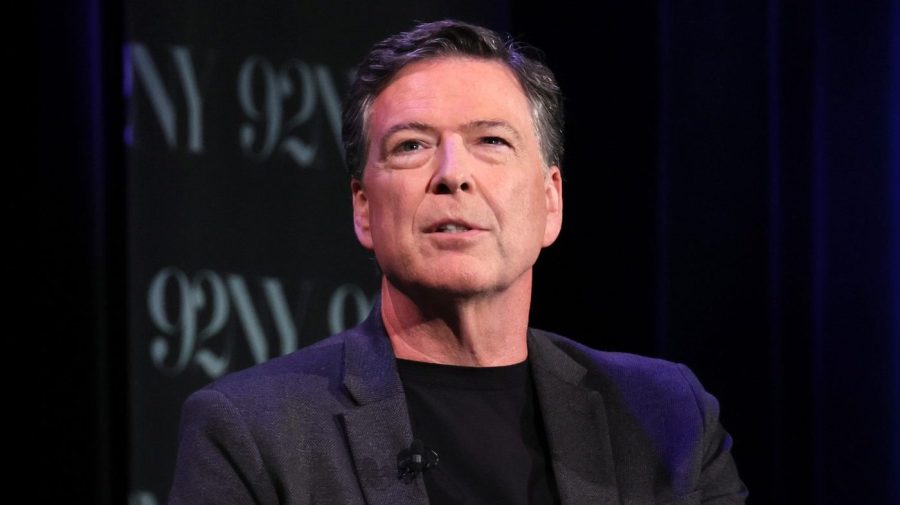
Conservatives are mocking former FBI Director James Comey over a post he made on his Substack on Sunday in which he discussed his admiration for pop superstar Taylor Swift. The post features a video of Comey calling Swift “a truly inspirational public figure” and noting her recent appearance on NFL stars’ Jason and Travis Kelce’s…
Read More
-
Uncategorized9 months ago
Bob Good to step down as Freedom Caucus chair this week
-

 The Josh Fourrier Show9 months ago
The Josh Fourrier Show9 months agoDOOMSDAY: Trump won, now what?
-
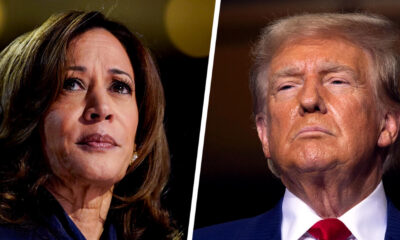
 Politics9 months ago
Politics9 months agoWhat 7 political experts will be watching at Tuesday’s debate
-
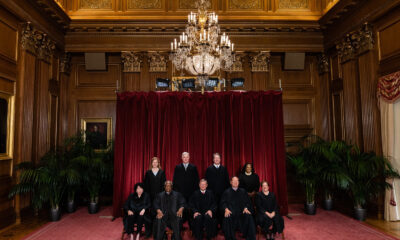
 Politics9 months ago
Politics9 months agoHow Republicans could foil Harris’ Supreme Court plans if she’s elected
-
Economy9 months ago
Fed moves to protect weakening job market with bold rate cut
-
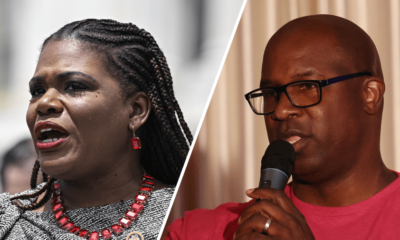
 Politics6 months ago
Politics6 months agoFormer ‘Squad’ members launching ‘Bowman and Bush’ YouTube show
-
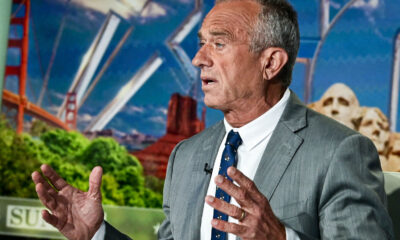
 Politics9 months ago
Politics9 months agoRFK Jr.’s bid to take himself off swing state ballots may scramble mail-in voting
-

 The Dictatorship6 months ago
The Dictatorship6 months agoPete Hegseth’s tenure at the Pentagon goes from bad to worse



